Overview
Internal Tools Ecosystem is a collaborative, shared platform of four self-service tools including: project intake, labor and cost management, file repository and digital storage, real-time status tracking, data analytics and on-demand reporting. A design-led initiative includes an extensible set of internal productivity tools which can be leveraged by other business teams as a digital-ready solution.
Defining the Problem
In the past, the Digital User Experience team collected, tracked, and logged project requests, labor costs, and funding approvals manually with office applications and various means of communication. Creating the first-ever automated B2B ecosystem and comprehensive lifecycle tracking streamlined the process which increased operational efficiency and decreased administrative costs.
Goals
In collaboration with internal design team, business and development partners, I determined these goals for the project:
• Establish, deliver, and maintain a collaborative, shared platform of four self-service internal productivity tools with on-demand reporting capabilities
• Utilize the global navigation AEM framework including the adoption and integration of Business 2.0 design standards and pattern library
• Deliver auto-generated email notifications by ticket request status
Design Research
I performed the following analysis to understand the users’ needs:
• Administered internal user interviews with business and design team members to gather user insight and build requirements
• Gathered usability feedback and additional requirements for iterative design improvements to build, review, analyze, test and resolve technical and design issues
Design Principles and Metrics
Design Principles:
• Simple: automate a cohesive framework for a seamless an end-to-end solution
• Smart: extend the set of self-service tools to other business teams as a digital-ready solution
• Personal: provide global login access with individual tracking of information and display
Metrics:
• Increase productivity
• Save money in labor (increase operational efficiency, decrease administrative costs)
• Reduce project intake escalations to leadership
Ecosystem Tools and Capabilities
New, automated B2B ecosystem and comprehensive lifecycle project tracking system:
• Global Navigation and Footer: modeled after AEM framework
• Intake: Track and manage project requests including requested services and talent assignments
• Tally: Collect, store, track and report billable hours against project funding
• Trax: Real-time UX project status and tracking with unified data information across all tools
• Tacklebox: Single-source file repository and digital storage solution
• Reports: Targeted on-demand data reporting and analytics
Examples


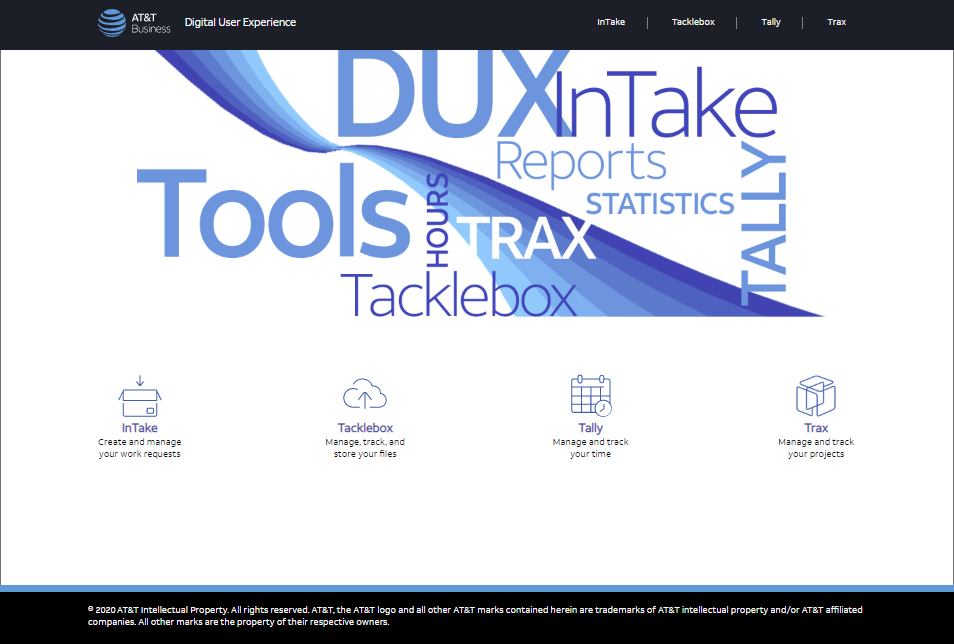
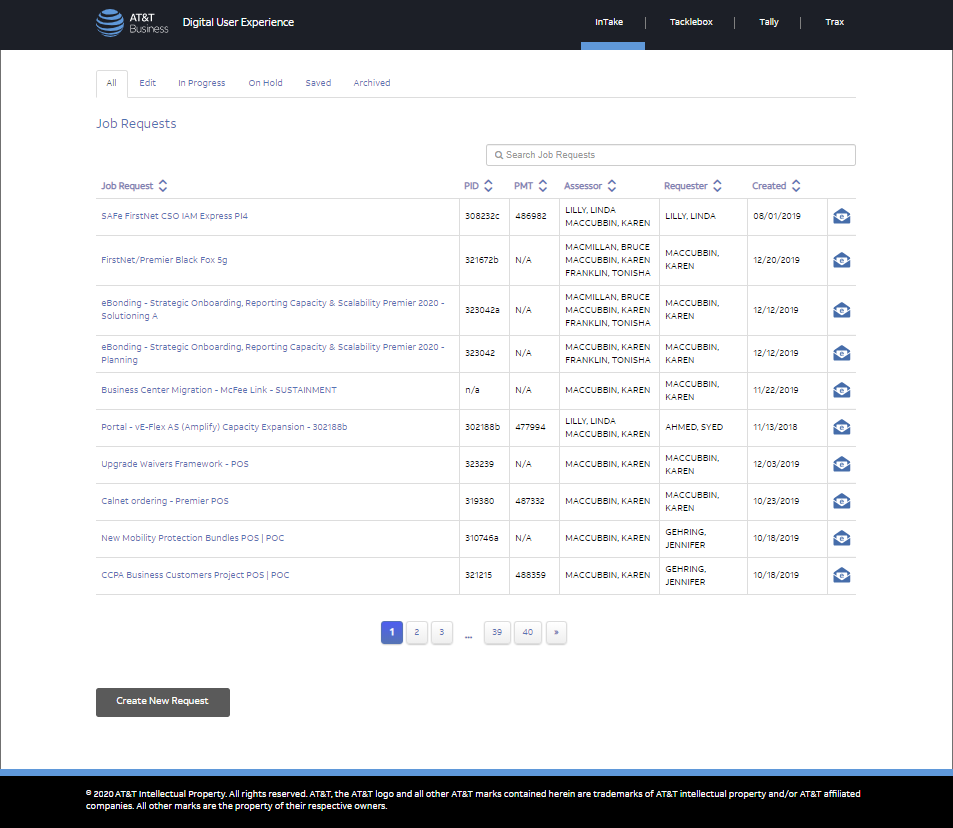
Link to InTake Desktop and Mobile Flow Pages
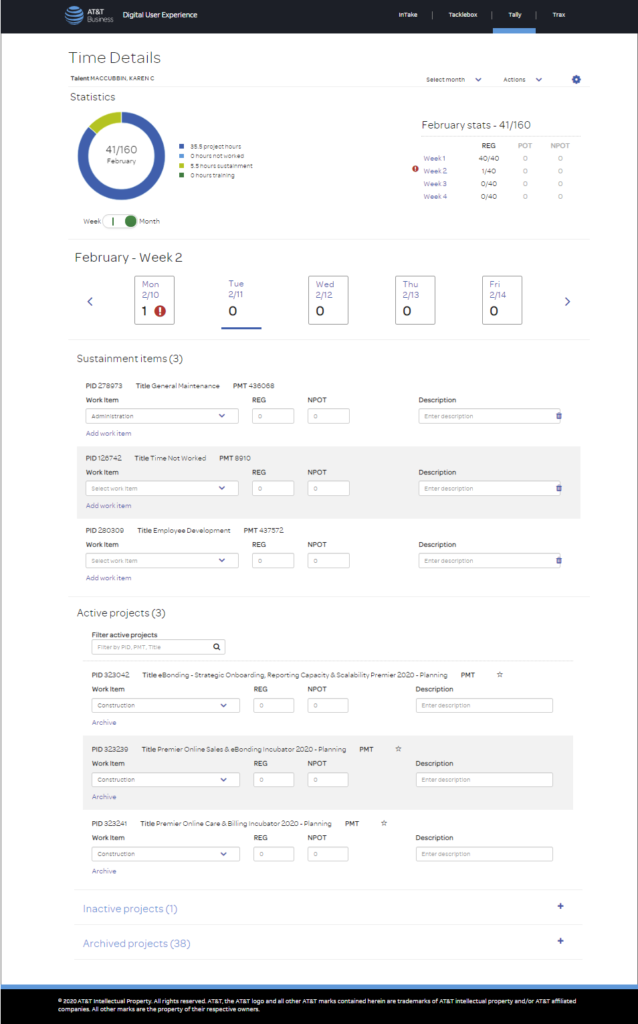
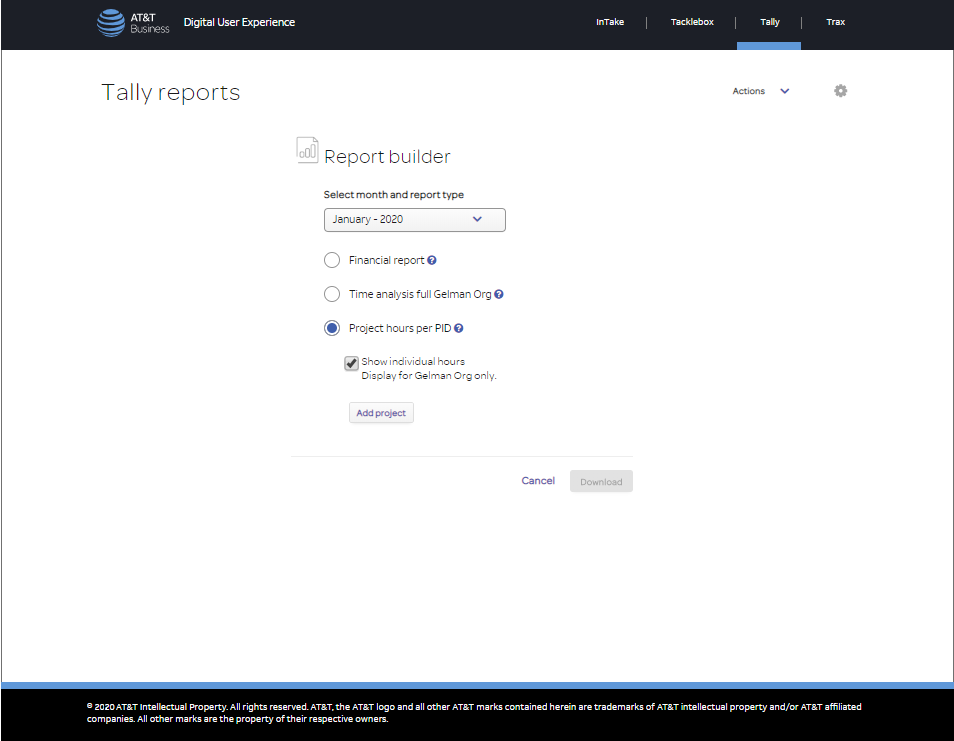
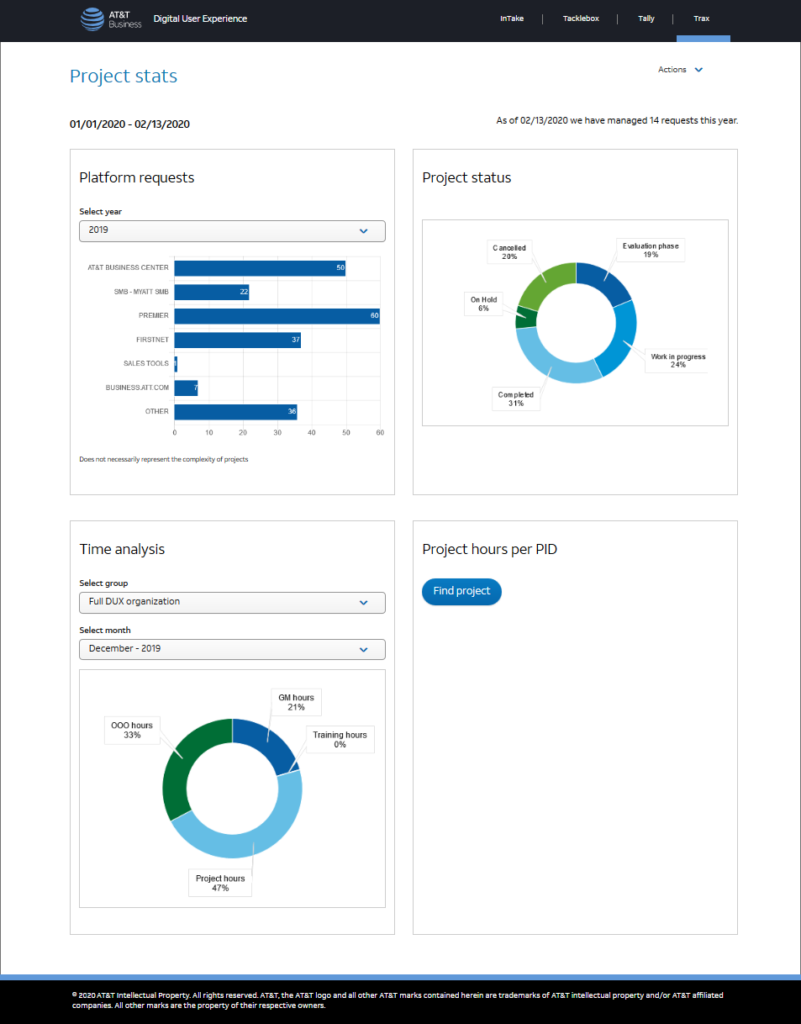

Outcome
• Boosted productivity and decreased operation costs to absorb a -25% organizational reduction
• Saved money in labor charges, while freeing up multiple hours of team capacity which was fed back into project work
• Reduced escalations to management by 80%
Reflection
Woot! Woot! I really enjoyed working with smaller UX and development teams to iteratively design, build, test, and implement the suite of productivity tools. Working closely and collaboratively we leveraged lean methodology while collecting user feedback for iterative design improvements. I’m a big advocate and strong supporter of working team relationships which build trust and respect. 🙂